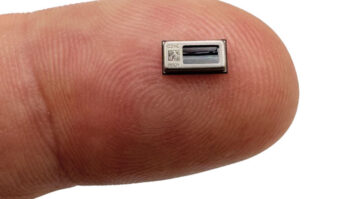Mark Rowan is president, Griffin Technology
As is the case with any disruptive technology, the birth and growth of the iPod spawned a multi-billion dollar industry dedicated to the creation of an entire accessories ecosystem. And the automotive space emerged early on as one of the most promising areas for innovation and potential revenues for CE manufacturers. In fact, since designers tried to shove a record player into the glovebox of a 1956 Chrysler, the CE industry has been chasing the Next Thing in technology. All in an attempt to make it easier to play music on the way to the grocery store.
From Custom Installs to Zero-Configuration Kits
For those who could afford them, custom auto installations integrated power and play into the car’s stereo system through built-in docks. However, the largest opportunities for us and our competitors arose within the zero-configuration segment … plug-and-play solutions that were ready to play iPod music on a car stereo right out of the box.
Soon after iPod made its first appearance, FM connectivity solutions proliferated. Put simply, music was sent from the iPod to the car stereo wirelessly using a low-power FM transmitter broadcasting to an open frequency on the car’s radio. Improvements in sound quality and the overall user experience helped FM transmitters grow to be the second most in-demand iPod accessory, surpassed only by car and home battery chargers.
Auto manufacturers were listening too, and responded with the inclusion of connection systems built in to new car models. Chief among these was auxiliary input. Using a simple stereo cable, the user connects the iPod to the car’s stereo through an easily accessible AUX input. AUX solutions currently represent the fastest growing segment of in-car connectivity.
Pros & Cons
Each method had its strong and weak points. FM offered wireless play and a single cable charge/play configuration, but the sound quality could be compromised when used in locations where numerous radio stations crowded the dial. AUX offered true plug-and-play ease of use, but required an additional cable to handle the iPod’s power needs.
In short, what one technology gave, another took away. And while product development and manufacturing are driven by compromise, consumer expectations aren’t.
Crystal Ball
Today, the in-car play space is still dominated by FM solutions. But new technologies loom which promise to change the game again.
Chief among these is Bluetooth. As Bluetooth audio appears standard in more and more smartphones and handheld music devices, CE and auto manufacturers will play a key role in making the technology accessible and understandable. The vast majority of consumers simply want to use their devices rather than learn the ins and outs of a new technology. Bluetooth offers the possibility of true, no-hands, proximity-based connection. The consumer gets into the car, the iPod and the stereo recognize each other, and music begins to play.
Too, the worldwide adoption of power via micro-USB as the standard charging protocol for smartphones and other mobile devices will simplify the challenges inherent to accessory compatibility.
Which technology will win?
Actually, I don’t think that any one technology can satisfy every need the consumer market has. That’s the driving force behind product differentiation within the accessories space.
Instead, I think the most successful products and solutions will be those that become invisible to the user. Not literally, of course; but in the way where the product design and user interface wrap around the technology and create a total user experience. One that’s effortless to use and simply gets out of the way of letting the consumers get what they really want … the ability to use their digital content where and when they want so that they can feel relaxed, or enlightened, or entertained.
When CE manufacturers realize that technology is simply a tool, the debate about the “better technology” will become largely academic. And then we can get down to the real challenges of designing intuitive, elegant answers.
About Griffin Technology
Founded on Paul Griffin’s kitchen table in 1992, Griffin Technology Inc., is today one of the world’s foremost creators of accessories for home, mobile and personal technology. Unique products such as iTrip, PowerMate, iFM, iMic and Evolve have broken new ground in consumer electronics and created loyal fans the world over. Today, Griffin products are conceived, designed and developed in-house and continue to push the envelope of the industry they helped create. Learn more about Griffin’s entire range of ingenious designs at www.griffintechnology.com.













